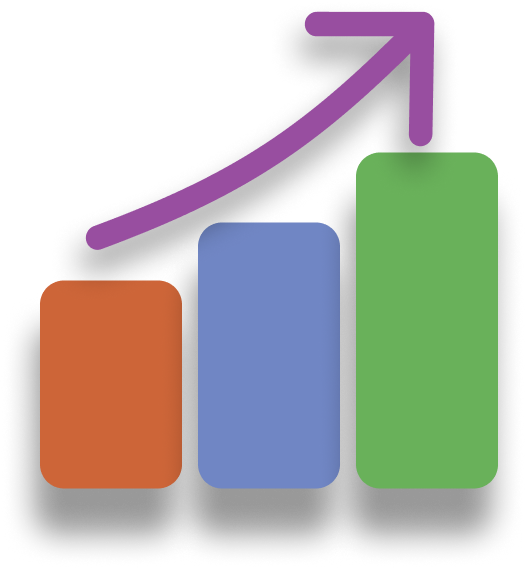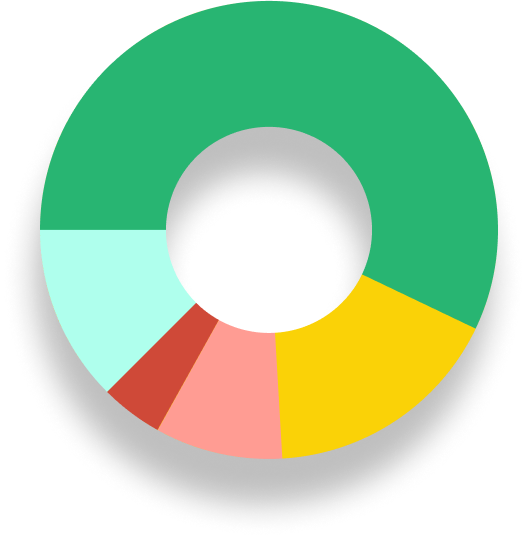Brought to you by WorkTime, your partner in privacy-friendly absenteeism monitoring.
Absenteeism - the silent profit killer
One missing employee = a broken workflow. That empty chair doesn’t just mean one person’s work is left undone. It means tasks get delayed, teammates get overloaded, and projects slow down. Multiply that across a department, and suddenly your business is losing serious money quietly every day.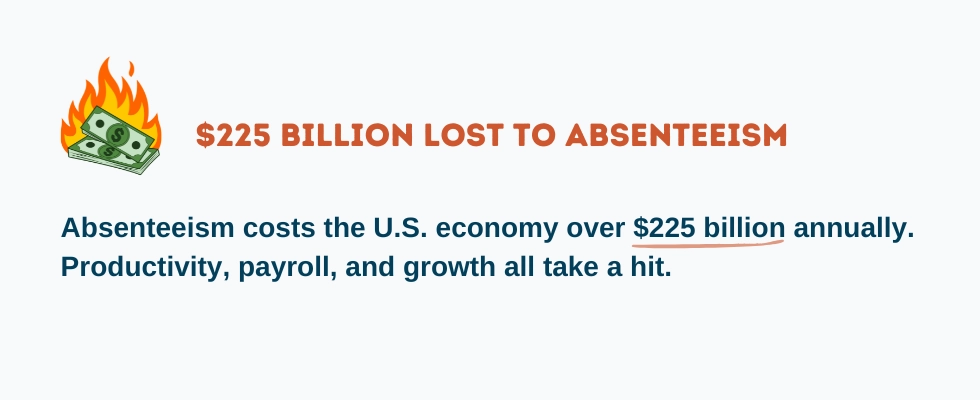
Too many facets of absenteeism
Absenteeism in the workplace isn’t always visible. And that’s what makes it so expensive. A single sick day is obvious, but the bigger impact comes from repeated lateness, disengagement, or sudden no-shows. Without absenteeism monitoring, these issues quietly reduce productivity, overload teams, and eat into profits long before they’re noticed. Here’s a closer look at the main types and how each silently undermines performance.Obvious no-shows
Every team lead has dealt with that one employee who’s often late, calls in sick at the last minute, or skips shifts entirely. What seems minor can trigger a chain reaction that drains productivity and profits. Here's how it snowballs:- Workflow cracks. Tasks get delayed, deadlines slip, and projects stall.
- Extra load on the team. Colleagues work beyond regular hours to cover gaps.
- Stress surge. Overloaded team members get tired, errors happen, and quality drops.
- Money drain. Lost productivity, extra pay for overtime, and delayed projects quietly eat into profits.
- Business fallout. In the long run, repeated no-shows can slow growth, disrupt client relationships, and hurt your company’s reputation.
Hidden absenteeism
Not all absences are visible on the timesheet. Some employees are in the office or logged in from home, but their minds are elsewhere. This is presenteeism - when employees are at work but not fully engaged. Whether it’s stress, illness, burnout, or lack of motivation, the result is the same: performance quietly slips. And the impact is huge. Research shows that “presenteeism steals nearly 3 months of productivity per employee each year,” compared to just 4 days lost to sick leave.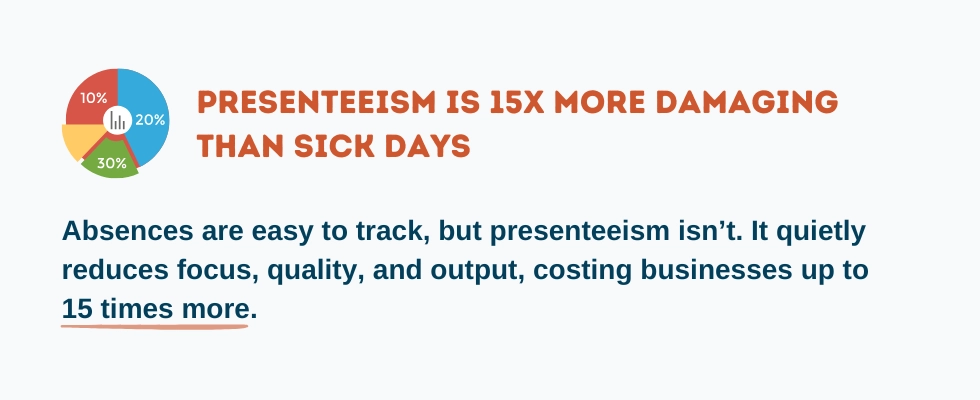
Sudden dropouts
Sudden dropouts happen when an employee unexpectedly leaves work, often due to emergencies like family issues, transport problems, or urgent personal matters. This unplanned absenteeism in the workplace can disrupt team workflow and delay projects, particularly when the employee holds a key role.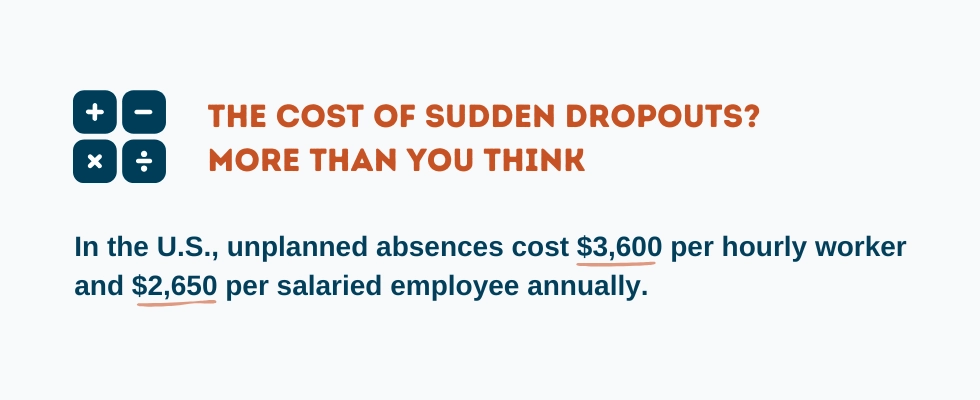
How to spot absenteeism before it spreads?
Ever spotted an employee who’s “sick” every Monday? Or a once top performer now moving slowly, drained of energy, with poor results? These aren’t random. You come across red flags of absenteeism in the workplace.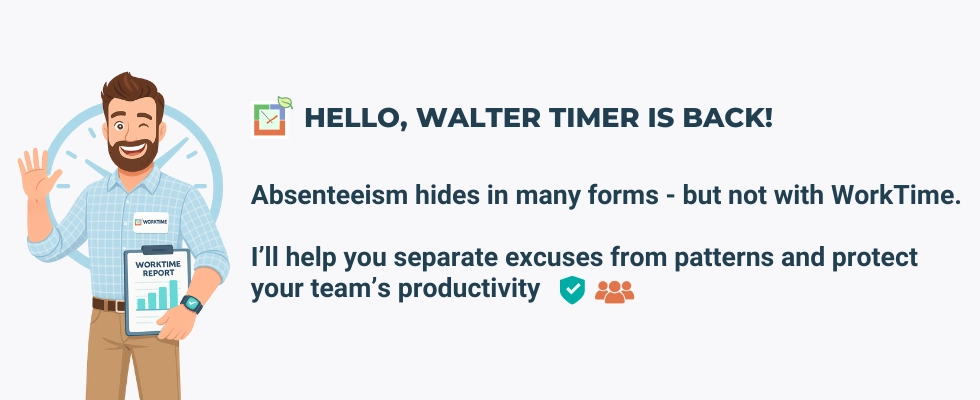
- Attendance patterns. Track employee absence to reveal “Monday sickness” or late arrivals. One global call center found that agents with even two late logins a week were 30% more likely to quit within six months.
- Active work time. Being logged in doesn’t equal productivity. Track active vs. idle hours to see the real picture. A common situation highlights the issue. 8 hours online, 3 hours active? That’s a red flag for motivation, focus, or burnout.
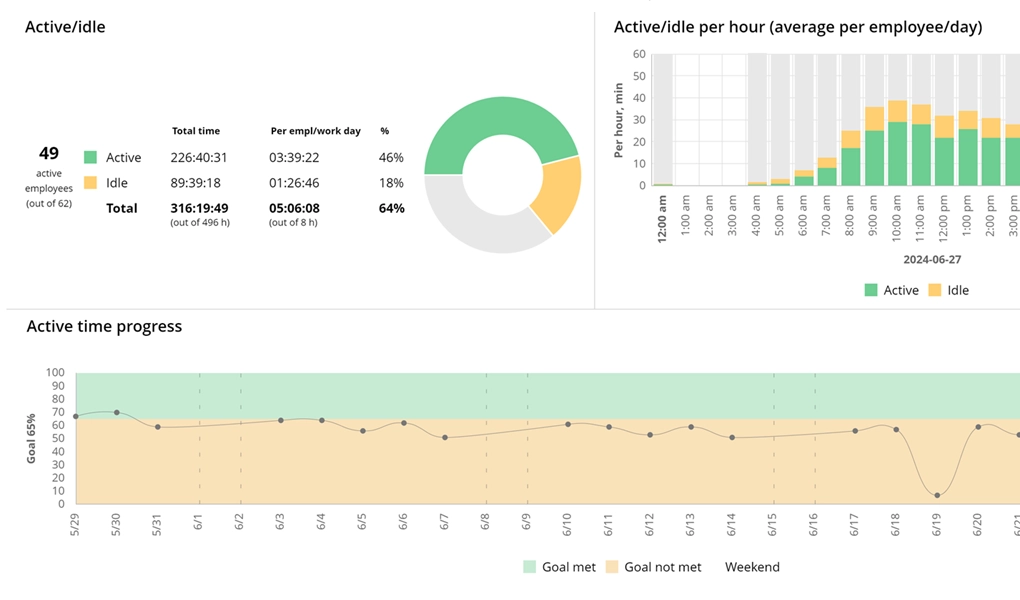

Know exactly where your team stands. This report highlights productivity and active vs. idle time patterns - helping you catch absenteeism early.
Start free trial- Productivity signals. Absenteeism in the workplace leaves clues before it strikes, like declines in focus, performance, or task efficiency. Here’s what it can look like in practice. A salesperson who regularly hit weekly targets suddenly struggles to close even half as many deals, showing disengagement before taking unplanned leave.
Why invasive absenteeism monitoring backfires
The stricter the absenteeism monitoring, the better the results? Not really. In practice, invasive surveillance doesn’t prevent absenteeism. It often makes it worse. Tools that take creepy screenshots or record keystrokes don’t send a message of support. They scream, “We don’t trust you.” And when trust disappears, so does motivation. Take this example. One company introduced screenshot monitoring to improve performance. Instead, employees complained of feeling constantly watched, morale collapsed, and top performers quit. What was meant to help ended up backfiring.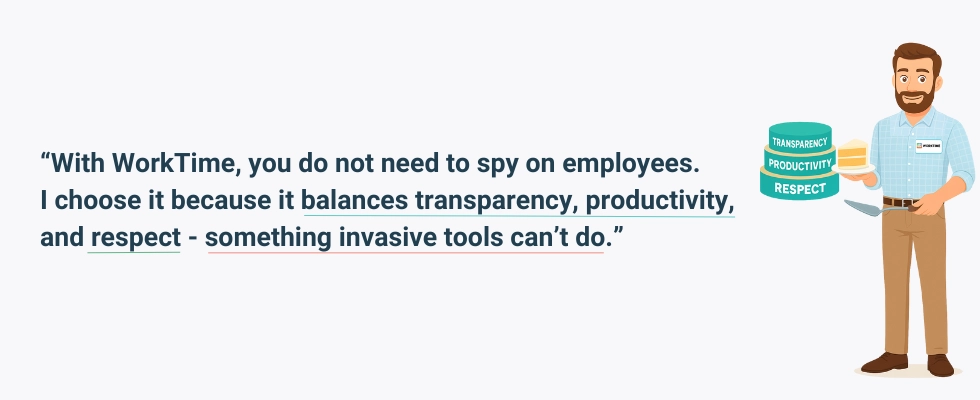
- Lower morale. Employees feel mistrusted;
- Higher stress. Constant surveillance creates tension and anxiety;
- Disengagement. Engagement and productivity decline;
- Increased turnover. Top talent seek healthier workplaces;
- Hidden losses. Lost trust quietly damages overall performance.
WorkTime - privacy-safe absenteeism monitoring
Micromanagement can’t solve absenteeism in the workplace - but relevant metrics and actionable insights can. WorkTime provides both, as well as protects privacy and keeps your team motivated. Our absenteeism monitoring tool is completely non-intrusive. Instead of capturing screenshots or logging keystrokes, it tracks key absenteeism-related metrics in numeric form.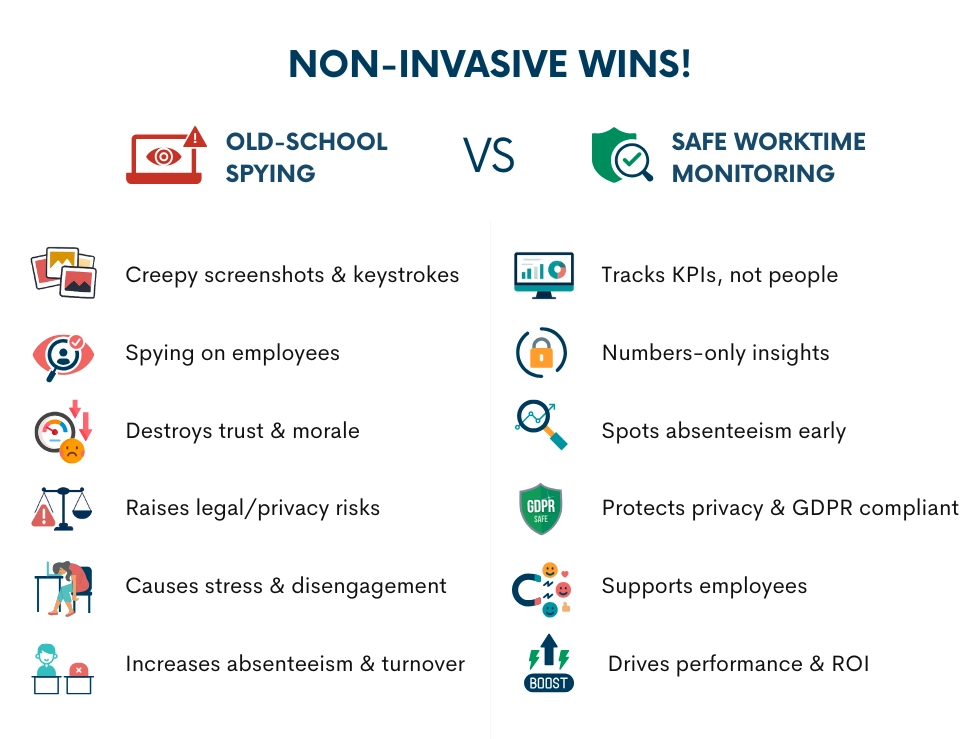
Real wins, real numbers
Our clients’ experience proves how powerful absenteeism monitoring can be. One UK-Japan banking group faced falling productivity after employees started working remotely. Managers suspected absenteeism, but it was hard to act without clear data. With WorkTime employee absenteeism tracking, they uncovered recurring idle-time patterns. Employees logged in and then disappeared for hours. Once addressed openly, productivity turned around instantly. The result?- Active time jumped from 30-40% to 86%;
- Employees stayed accountable without feeling micromanaged;
- Managers gained clarity and control, even with remote teams.
Smart, non-intrusive absenteeism monitoring
WorkTime delivers attendance and productivity reports with zero spying. The key is balancing oversight with employee trust. Using these insights, you can detect absenteeism and respond proactively: 1. Active/idle time. Monitor engagement during work hours to spot early signs of disengagement. 2. Attendance rate. Track employee absence and catch patterns like frequent lateness, early departures, and unplanned absences.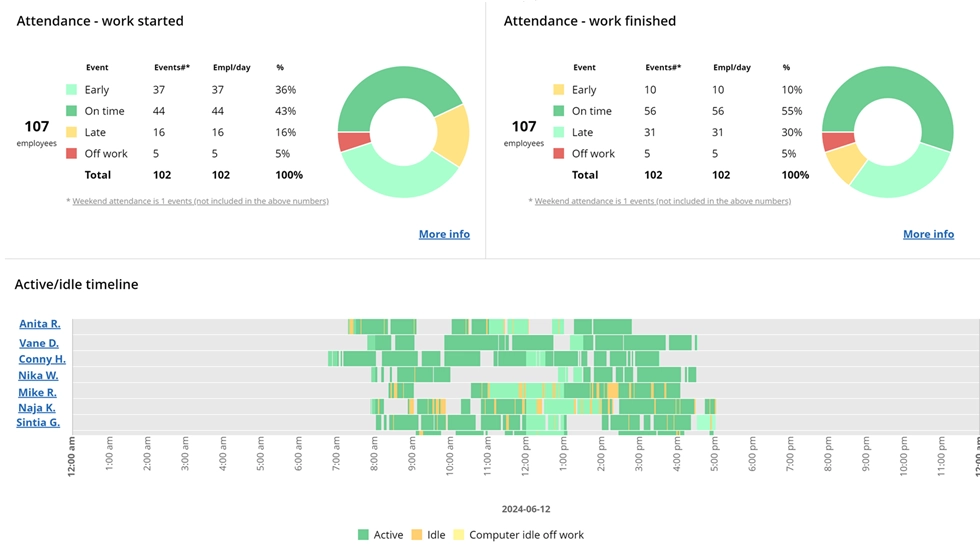

See who’s on time, late, or absent, and monitor active work time. Spot absenteeism early and keep your team productive.
Book demo






